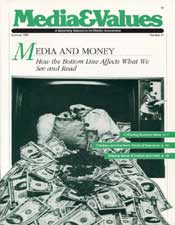CHILDREN: Economic Lessons for Young Viewers
|
This article originally appeared in Issue# 47
|
Young children form many of their ideas about the outside world from television. And what they're seeing is a world in which money rarely changes hands and few financial transactions are completed. At the same time, the advertisements that saturate children's shows seldom mention that the toys and candy cost anything. The following tips can help parents and teachers structure economic learning experiences from television:
- When a character acquires goods or services without paying for them, point out the discrepancy. Young viewers might want to guess the cost of items or services they see.
- To put advertising in proportion, encourage children to make notes about toys, games or other products they find appealing. Compare brands and check prices at a local store. Then help children put prices in context by matching them with family necessities like bread, milk or clothing.
- Consider allowances for children who are old enough to be interested in money. How do their favorite young TV characters get money? Can their families afford their clothes, games and toys?



